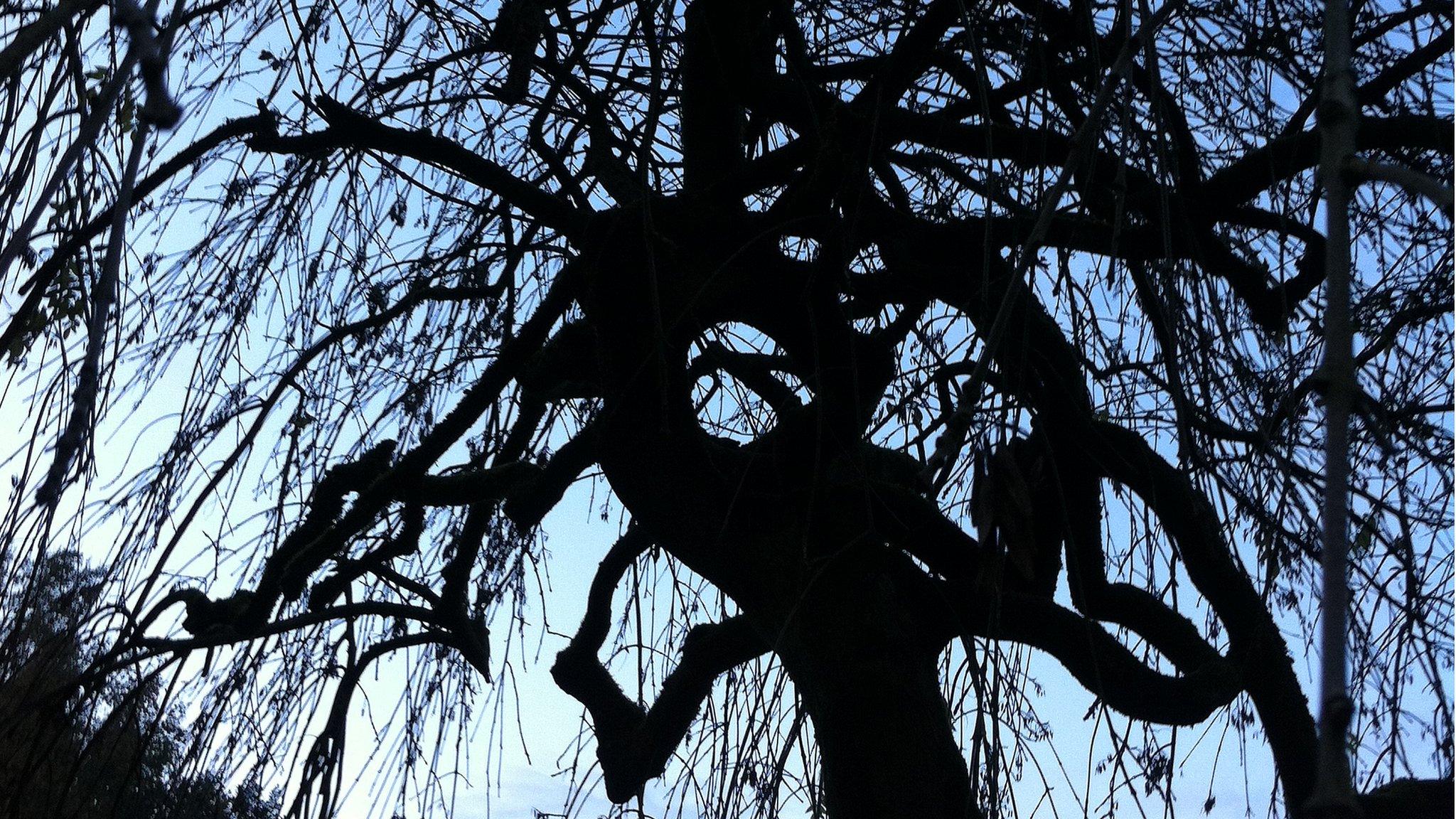Maths helps prepare for new diseases
- Published
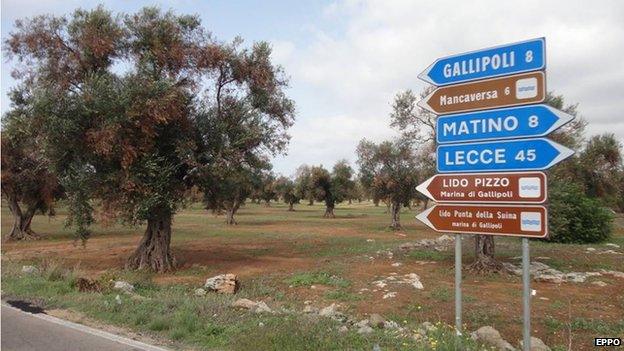
An invasive pathogen has affected thousands of hectares of olive plantations in Puglia, southern Italy
Researchers have developed a way to help determine the level of surveillance required to detect the arrival of costly invasive diseases.
The mathematical model offered "an initial idea" of what a particular level of surveillance could achieve.
The work comes at a time when the number of invasive pathogens, including those affecting crops, is on the rise as a result of global trade and travel.
The findings appear in the Proceedings of the Royal Society B, external.
"Surveillance efforts have been getting increasing attention because early detection is crucial in order to control these epidemics," explained co-author Stephen Parnell from the University of Salford, UK.
"If you want to have a chance of controlling them or getting rid of them then you really have to catch them at a very early stage."
One example of an invasive pathogen threatening an important food crop is the arrival of a virulent bacterium in southern Italy.
A report by the European Food Safety Authority (EFSA), external in January observed that the pathogen, Xylella fastidiosa, was responsible for a "rapid decline" in affected olive plantations.
"Major consequences", such as reduced yields and costly control measures, would be the outcome if it spread to other olive-producing regions in the EU, it added.
In July, France reported an outbreak on the Mediterranean island of Corisca. The European Commission described the pathogen as one of the biggest threats to plants around the globe.
Detection probability
Dr Parnell told BBC News: "Surveillance is a very expensive process so if you are doing surveillance following an invasive epidemic then you want to know what the probability is of detecting the epidemic at a low prevalence.

Olive production forms an important part of many European regions' economies
"This was an epidemic modelling approach where we could - given the amount of surveillance that was being done, and information about how quickly an epidemic spreads once it invades - we were able to tell you at what incidence you would be likely to detect it.
"If you have that information then the idea is that you could adjust your surveillance effort if you need to detect it at an earlier stage."
He added that there was currently very little information about how well detection efforts were likely to perform in terms of finding invasive pathogens.
"This model is giving just a little more evidence to support and help inform how much surveillance needs to be done for certain disease threats," Dr Parnell said.
"The benefit of this approach is that it is very simple. The only information you need about the epidemic is an estimate of what we call 'epidemic growth rate', that is once the epidemic invades, how quickly does it increase over time?"
Fire fighting
Although maintaining an ongoing monitoring network was costly, the consequences of killer diseases becoming established in an area could have a landscape-changing impact.
"An analogy I often use is of a fire," explained Dr Parnell.
"If there was a fire in a house, you would want to catch it as soon as it lit the tip of a curtain rather than when it has lit up an entire room.
"It is a similar situation with an epidemic, you have to catch it at a very early stage because a lot of the control methods we use, for example with tree health problems, are felling of large stands of forest.
"The area you would need to fell can quickly escalate so it is really, really important to catch it at an early stage."
- Published9 January 2015
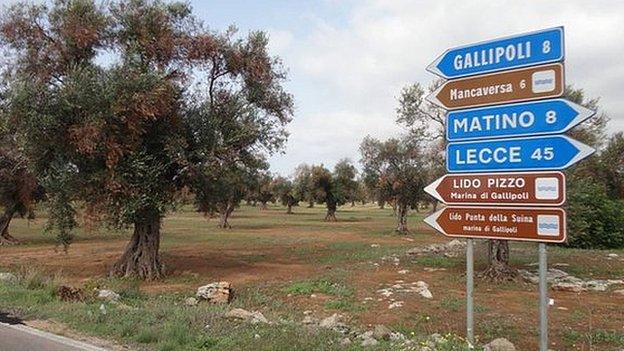
- Published30 July 2015
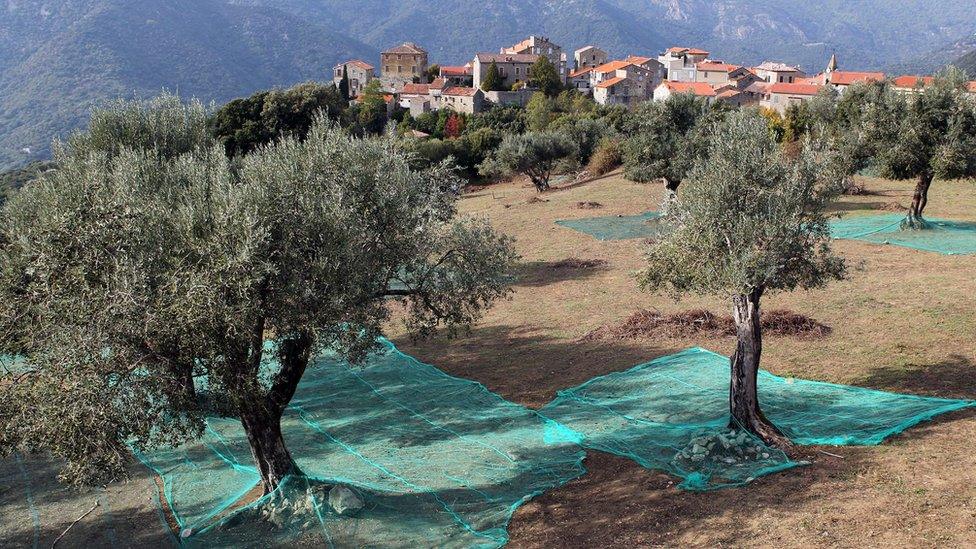
- Published9 November 2012
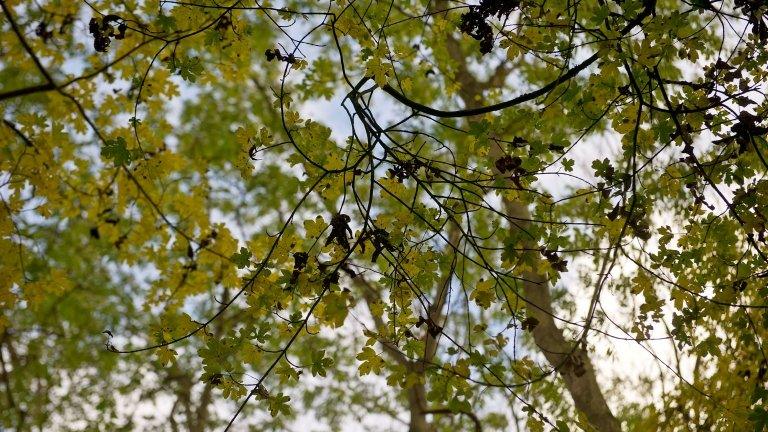
- Published7 November 2012
